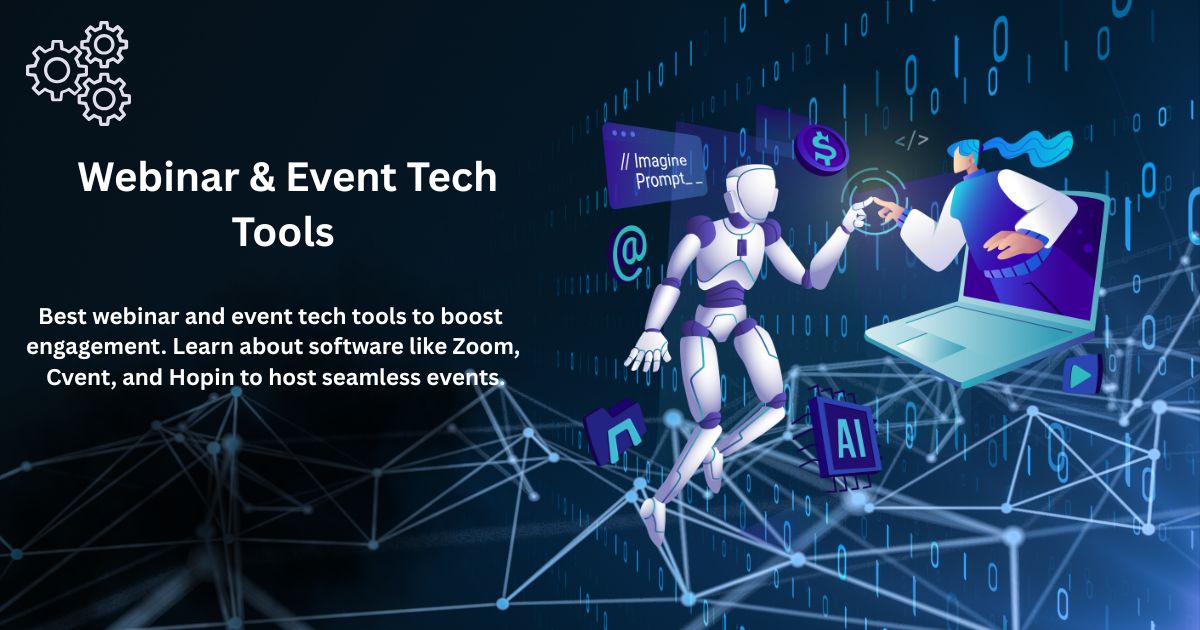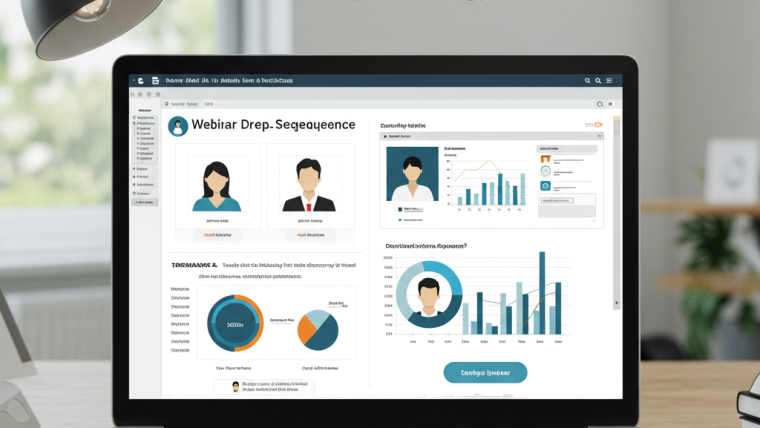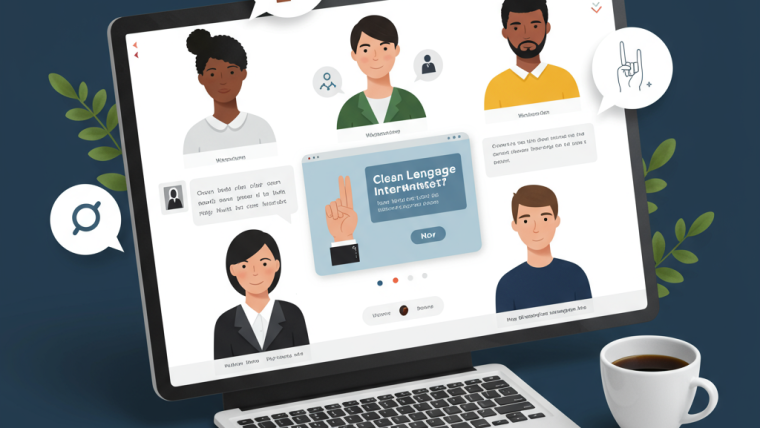Webinars and virtual events have become indispensable in modern business and education. Whether you are hosting a product launch, a workout or a global conference, the right technique can create or break your program. But with so many equipment available, how do you determine what is your investment worth?
This guide will run through you the necessary webinar and event recording, their important features and how to choose the best options for your needs. Towards the end of this post, you will be ready to create spontaneous and attractive virtual events that leave a permanent impression.
Why Choosing the Right Webinar and Event Tech Matters
Behind every memorable webinar or virtual event is a curated stack of tech tools. The right platform or software can:
- Enhance engagement with interactive features like polls, Q&A, and live chat.
- Optimize attendee experience through easy access and high-quality streaming.
- Streamline planning and execution with automation and analytics.
Failing to use the appropriate tech could lead to technical glitches, low engagement, and a poor return on investment (ROI). That’s why understanding your options is a critical first step.
Key Features to Look For in Webinar and Event Tech
When selecting tech tools for your webinars or virtual events, keep an eye out for these essential features:
1. User-friendly interface
You don’t want attendees spending 10 minutes figuring out how to log in or use the platform. Simplicity should be a priority for both you and your audience.
2. Reliable streaming quality
A laggy or blurry webinar can quickly frustrate attendees. Look for robust streaming capabilities with HD video and minimal buffering.
3. Audience interaction tools
Polls, Q&A sessions, chat features, and real-time surveys elevate the viewer experience. They not only engage attendees but also gather valuable feedback.
4. Analytics and reporting
Post-event data is a goldmine. Platforms offering in-depth analytics allow you to track attendance, engagement rates, and ROI.
5. Customization and branding
Your brand should shine throughout the event. Choose tools that support logo placement, customized emails, and tailored registration pages.
Top Webinar and Event Tech Tools to Know
Here’s a curated list of some leading tools for hosting webinars and events.
Webinar Platforms
1. Zoom Webinars
- Best For: Hosting webinars for small to medium audiences.
- Features:
-
- Up to 50,000 attendees with paid plans.
- Live video streaming and on-demand recordings.
- Interactive features like chat, polls, and Q&A.
- Why It Stands Out: Zoom’s easy interface and reliability make it a go-to for consistent webinar experiences.
2. GoToWebinar
- Best For: Large-scale presentations or training sessions.
- Features:
-
- Reporting and analytics dashboards.
- Options for prerecorded or live webinars.
- High-quality video and sound capabilities.
- Why It’s Popular: It offers robust analytics and detailed reporting tools to measure your webinars’ success.
3. Webex Events
- Best For: Enterprises hosting professional-grade virtual conferences.
- Features:
-
- AI-driven real-time translation for global audiences.
- Sleek layouts for slides and screen-sharing.
- Advanced security features.
- Why Businesses Love It: Webex Events combines enterprise-level scalability with AI-enhanced attendee interaction, making complex event management easier.
Event Management and Registration Tools
4. Eventbrite
- Best For: Small to medium-sized events.
- Features:
-
- Easy registration page creation.
- Ticketing and payment integration.
- Promotional tools for social media sharing.
- Why People Use It: Eventbrite simplifies the ticketing and event promotion process, especially for smaller teams.
5. Cvent
- Best For: Large-scale conferences and corporate events.
- Features:
-
- Comprehensive event planning tools.
- Registration forms and customizable badges.
- Post-event surveys and data insights.
- Why It Works: Cvent is a versatile tool that helps organizers seamlessly manage all stages of an event lifecycle.
Engagement Tools
6. Slido
- Best For: Adding interaction to live sessions.
- Features:
-
- Real-time audience polling.
- Moderated Q&As for seamless discussions.
- Analytics charts for poll responses.
- Why It’s Effective: Slido drives engagement without any disruptions, encouraging participants to stay involved.
7. Mentimeter
- Best For: Creating interactive presentations.
- Features:
-
- Gamified quizzes and live polls.
- Word clouds to visualize audience responses.
- Effortless slide integration.
- Why Users Like It: A creative tool for making webinars fun and interactive.
All-in-One Event Management Systems
8. Hopin
- Best For: Virtual and hybrid events.
- Features:
-
- Multiple features, including networking, breakout rooms, and expo areas.
- Customizable event branding.
- Integrated analytics solutions.
- Why It’s Trending: Hopin has everything you need to host immersive virtual or hybrid events in one unified platform.
9. Airmeet
- Best For: Hosting and networking for global audiences.
- Features:
-
- Virtual lounges for attendee networking.
- Multi-stage capabilities for larger events.
- Audience engagement tools like emojis and live questions.
- Why It’s Unique: Airmeet excels in replicating the networking aspect of in-person events.
How to Pick the Right Tools for Your Event
Now that you’re familiar with some of the top tools, focus on matching them with your specific needs. Here are some tips to make an informed decision:
- Define your goals. Are you looking for high engagement, lead generation, or educational impact? Your objectives should dictate the tools you choose.
- Consider your audience size. Smaller webinars might work with a simpler tool like Zoom, while larger-scale events might need Hopin or Cvent.
- Think about your budget. Be realistic about costs and prioritize tools that offer flexibility for scaling or adding features.
- Test before launch. Run a dry test with your chosen tools to ensure they perform smoothly under real-world conditions.
Preparing for a Flawless Webinar or Event
Even with the best tools, preparation is key to a seamless experience. Follow these steps:
- Plan ahead. Create a checklist covering registration, invites, and tech setup.
- Practice run-through. Test all tools and features with your team before going live.
- Engage early. Use pre-event emails to excite attendees and remind them of the schedule.
- Monitor and adapt. Be flexible during the event. Troubleshoot quickly and adapt to audience needs.
Understanding How to Promote a Webinar to Generate More Leads
Equip Your Events with the Best Tools Today
Webinars and virtual events represent the future of engagement, training, and marketing. Equipping your business with the right tech tools ensures not only successful events but also meaningful connections with audiences.
Need support in navigating these tools? You’re not alone. Sign up for access to our expert resources today and get tailored advice for your next event. Don’t just keep up with the evolving world of webinars—stay ahead.








Webinar Analytics: A Complete Guide to Measuring Success and Improving Performance
The Ultimate Webinar Follow-Up Strategy to Turn Attendees into Customers
Webinar Accessibility Best Practices: How to Make Your Online Events Inclusive for All
Webinar Personalization: Tailoring Content to Audience Segments for Maximum Engagement